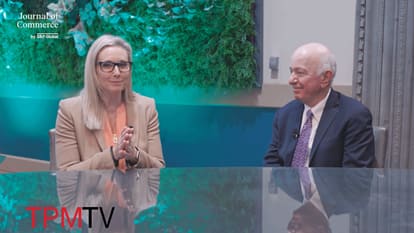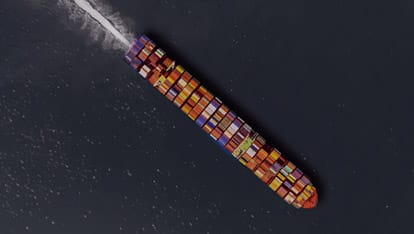- Program
- What's New
- Speakers
- Who's Attending
- TPM Community
- Partners
- Media

TPM TV
Episodes of exclusive TPM content featuring interviews of key stakeholders and attendees.
WATCH NOW - About

About TPM
The must-attend conference for the trans-Pacific and global container shipping and logistics community
LEARN ABOUT TPM - Get Updates
- FAQ's
Sessions With Mathew Moore
Tuesday, 5 March
-
04:20pm - 05:00pm (PST) / 06/mar/2024 12:20 am - 06/mar/2024 01:00 am
TPM Cold Chain: Investments in Cold Storage and Refrigerated Equipment — Capital Requirements
The global cold storage market is expected to triple over the next 10 years, from $1.2 billion in 2022 to more than $3.8 billion in 2032, according to a recent report from Towards Healthcare. Driving the growth are a number of factors: rapidly increasing demand for perishable goods, including fresh fruit and vegetables, dairy products, meat, seafood, and frozen foods; globalization and trade trends that demand longer shipping times; and increasing demand for online grocery services. In North America, two providers dominate the cold-storage market: Lineage Logistics and Americold, with a fragmented group of regional companies making up the balance. As demands grow so does the need for new investment – in properties primarily, but also technology, equipment, and space at ports and terminals to limit spoilage that was so prevalent in the COVID era. On the equipment side, lower demand in 2023 put little stress on reefer availability, but that is likely to change soon. That's because the 288,000 reefer units that carriers acquired between 2008 and 2012 are now nearing retirement age, leading to replacement buying, according to Eskesen Advisory. Likewise, lower demand put little stress on port fluidity in 2023, but with new routing patterns resulting from disruption to services in the Suez and Panama canals, bunching could begin to occur at ports and terminals in the trans-Pacific trades. This session will assess the growth of the global cold-storage market, the warehouse and equipment investment outlook, and how technology is influencing improving efficiency for refrigerated shippers at ports and throughout the global cold chain. In the process, it will address the following questions:
• What is the state of the cold-storage market, the inventory, and construction outlook?
• Where is the greatest demand for new development and what’s driving it?
• What is the investment outlook for new cold storage, equipment, technology, and ports?
Wednesday, 6 March
-
11:55am - 12:40pm (PST) / 06/mar/2024 07:55 pm - 06/mar/2024 08:40 pm
TPM Cold Chain: The Join the Move to -15C Initiative — Decarbonizing Refrigerated Shipping
A flurry of activity around container shipping decarbonization is under way, with private sector initiatives occurring alongside ambitious IMO targets to reach net-zero greenhouse gas emissions by 2050. On the industry side, 40% of new ships on the carrier orderbook are for vessels capable of running on green fuels, according to industry analyst Alphaliner. Forwarders, meanwhile, are offering zero-carbon products to a growing number of customers, and a coalition of large shippers is pooling 600,000 TEUs of volume over three years is pooling 600,000 TEUs of volume over three years, acting similarly to a traditional shippers’ association and pledging to purchase only ocean freight services powered by scalable zero-carbon fuels by 2040. Most recently, a coalition of cold chain stakeholders in late 2024 announced at COP28 in Dubai the formation of the Join the -15ºC Initiative with a goal of lowering frozen food temperatures to dramatically reduce carbon dioxide emissions. Most frozen food has been transported and stored at -18ºC, a standard established 93 years ago that hasn’t changed. New research shows that changing the standard by just 3 degrees Celsius would have a dramatic impact on environmentally damaging emissions. According to the research, going to -15ºC standard would:
• Save 17.7 million metric tons of carbon dioxide a year, the equivalent annual emissions of 3.8 million gasoline-powered automobiles.
• Create energy savings or approximately 25 terawatt-hours, equivalent to more than 8.6% of the UK’s annual energy consumption.
• Cut supply chain costs by at least 5% and up to 12%.
This session, which will bring to a close the inaugural TPM Cold Chain event, will analyze these important developments, with a focus on the -15 ºC initiative and its revelatory impact on refrigerated shippers and their service providers.
- Speakers:
- Mathew Moore
- Mary Pollard
- Thomas Eskesen

